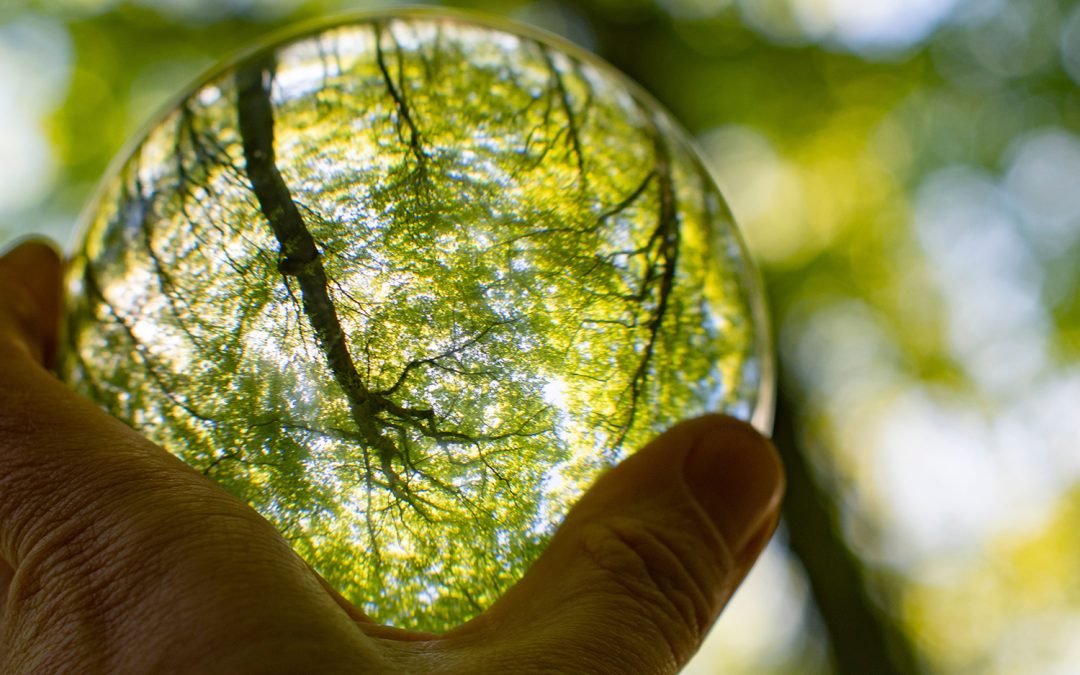
“The environment is where we all meet; where all have a mutual interest; it is the one thing all of us share.” – Lady Bird Johnson
Biomimicry has provided us with invaluable insights which have led to some incredible design solutions. We’ve previously outlined some examples of this, such as the Lotus flower inspired self-cleaning paint, and ‘Gecko Tape’ inspired by the lizards’ unique toes.
However, the story doesn’t end there; for some designers, the philosophy behind biomimicry runs much deeper.
The fact is, no species in nature lives in isolation; they have all co-evolved to interact synergistically[1]. They have evolved to survive, but also to help the survival of other life around them as part of an interconnected system.
Believe it or not, this includes us humans, despite the common perception that we are independent lifeforms whom are merely observing. Over time as a species, we have disassociated ourselves with the natural world, even whilst constantly and inevitably displaying our obvious reliance. Now, in a time of nearing climate crisis, reconnecting and reidentifying ourselves with our environment may be critical.
When we look at nature as a resource, the importance of its preservation is obvious to most of us. Since the industrial era, human civilisation has relied on the benefits of the ecosystem for our development and survival[2].
However, when designers begin to see nature as a source of wisdom, a new understanding can be reached. Nature must absorb the role of model, measure and mentor in order for our species to become ‘ecoliterate’ participants of the ecosystem[3].
“We still do not know one thousandth of one percent of what nature has revealed to us.” – Albert Einstein
ECOLITERATE DESIGN
Ecoliterate design aims to shift our design intentions, going from aiming to manipulate nature, to instead aiming to optimise and enhance it. Many products are creating more problems than they are solving; they contribute to resource-extractive, wasteful and consumption-oriented systems[4]. To put it short, they’re non-sustainable, meaning they’re not suitable for our ecosystems, meaning they’re not suitable for us.
Ecoliteracy means being prepared to contribute effectively to an organic understanding of the world[5]. This principle is closely related to that of ‘circular design’, however with a specific focus on natural inspiration, consideration, and symbiosis. It can be summarized as an active consideration of the following criteria:
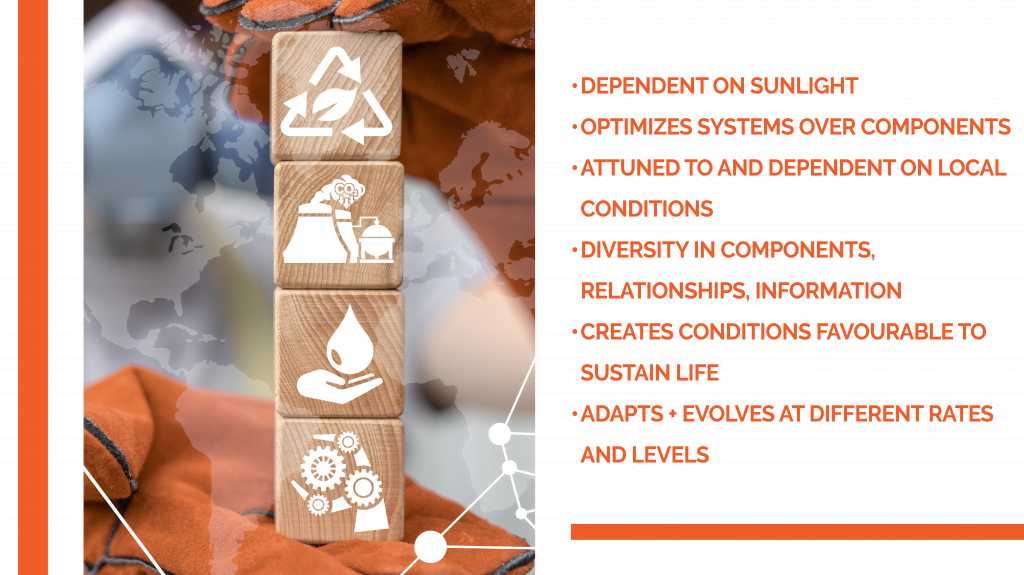
“Those who take for their standard any one but nature – the mistress of all masters – weary themselves in vain.” – Leonardo Da Vinci
HOLISTIC BIOMIMICRY
This approach to design is often related to as “holistic biomimicry”, as it takes into consideration the whole picture; it’s more than imitating nature’s biophysical properties, but rather intentionally designing products, systems and services for active compatibility within our local systems in order to support or enhance them.
We can look at termites as an excellent example of this outlandish, cooperative lifestyle. Termites are masters of considerate architecture, able to build their mounds to meet the needs of each colony member. They also cooperate with other organisms by using saliva and… other… bodily wastes to cement their soil particles, or as we like to call them, termite bricks.
These termite bricks are greatly beneficial to the surrounding soils, as it encourages organic matter decomposition and water conservation even after the mound has been abandoned. Their own constructions optimize the survival of the lifeforms around them, and even after they are gone[6].
We need to take a page out of the termite’s book, and emulate their symbiotic nature if we are, as a species, going to survive long term.
That’s not to say we encourage you to use your bodily waste to build your homes; though in saying that, we have used worse materials before, such as fibreglass (known to be a Carcinogen) and the notorious asbestos. In fact, some cultures do use a little dung in their designs, using animal waste for things such as floor waxing and housing foundations. But we digress.
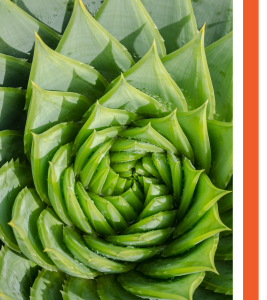 The aim with this philosophy is to wear “termite spectacles”[7] when designing, and thus to apply and adopt biomimetic products and systems which will better contribute to a sustainable future long-term.
The aim with this philosophy is to wear “termite spectacles”[7] when designing, and thus to apply and adopt biomimetic products and systems which will better contribute to a sustainable future long-term.
Perhaps in this lens, humans are meant to serve as the lubricant between the gears of the ecosystemic machine.
Holistic biomimicry encourages the shift away from the dualistic, detached attitude of culture being separate to nature, to a participatory perspective of the two being part of a greater system on a planetary scale.
Here, we will investigate some potential applications of holistic biomimicry, with examples of products which serve to encourage symbiosis rather than mere co-existence with the natural world.
“Human skill either completes what nature is incapable of completing or imitates nature.” – Aristotle
ECO FRIENDLY A.C.
Being Australian ourselves, we understand the struggle to prevent the sweltering heat to infiltrate our homes.
Now, with the arrival of summer, comes the looming threat of pricey electric bills and astronomical levels of energy consumption being sucked up our ACs, all in an effort to keep it cool.
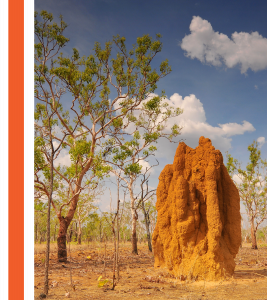 So to start off, we’re looking a designer who really did take a note out of the termites book. The Eastgate Center in Zimbabwe is also familiar with sweltering heats. Researchers have been inspired by the insects effective habitation strategies to develop human structures with self-regulating ventilation system, thus being better suited for hotter climates.
So to start off, we’re looking a designer who really did take a note out of the termites book. The Eastgate Center in Zimbabwe is also familiar with sweltering heats. Researchers have been inspired by the insects effective habitation strategies to develop human structures with self-regulating ventilation system, thus being better suited for hotter climates.
In 1955, Martin Luscher presented a theory on the termite mound’s natural air-conditioning, known as passive ventilation systems[8]. He observed that the crawly critters had to maintain a specific and consistent temperature within their homes in order for them to farm their primary food source, fungus.
Luscher proposed that to achieve this, the termites installed convection air vents throughout their home, which can be opened throughout the day. These vents are all carefully arranged, opened, and constantly adjusted by the termites, ensuring the naturally occurring winds and currents outside to be sucked into the lower levels of the mound, then down into the enclosed muddy walls.
Hot air within their home is generated by both the hot external climate warming the walls, as well as internally through the colony themselves. As hot air naturally rises, and with the assistance of the cool air currents, the heat shoots up through what we would consider as their ‘chimney’. This keeps the inside of their home regulated at the perfect temperatures to farm their fungus throughout the year, even during the harshest summers. The diagram below visually demonstrates this process.
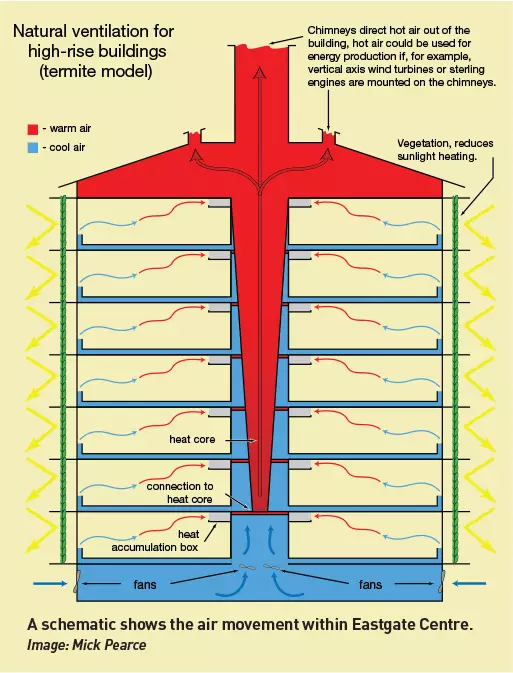
Image: Mick Pearce
Mick Pearce, a leading architect from Zimbabwe, used the technique of the termites to design a building with a similar passive, energy-efficient mechanism without the use of fuel-based air conditioning. The hot air inside the building rises and is released through rooftop chimneys, working in a similar fashion to the termite’s tall, towering mounds. Automatically operated fans also help enhance this process and assists to drive the airflow. This regulates the temperature naturally, with minimal energy consumption and consequential pollution.
However, there is a twist in the termites tale: it’s been argued that the mounds do not work this way at all (you can read about that scientific rodeo here). In fact, there is evidence to suggest that termites don’t regulate their nest temperature at all[9]. Regardless, it was in studying them that Pearce found his inspiration for one of the most famous sustainability projects in biomimicry.
What we also learnt from this project was that for termites, their homes are not a structural arena with an interesting function; they are the function, an extended physiology of the termites as lifeforms, maintained through ongoing construction. This highlights to us the potential for biomimicry in inspiring us to gravitate towards holistic and sustainable designs, which aim not to simply imitate life, but rather actively participate in our own natural cycle[10].
BIRD SAFE WINDOWS
Birds are not the first animal that come to mind when thinking of threatened species; they’re everywhere, having adapted with the development of human civilisation considerably well. However, they have their weaknesses too. A record number bird deaths have been reported, all of them sharing a single, deadly killer: windows.
No, Bill Gates hasn’t begun a bird-exterminating crusade. We’re talking about glass windows, the ones which protect your home from the elements and keep the flies outside.
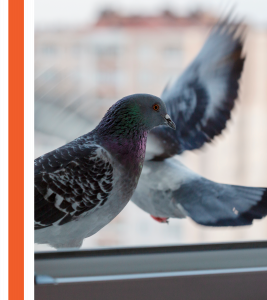 Whilst seemingly harmless, birds have a hard time seeing them whilst flying around our urban jungles[11]. Their reflective surface fools the feathered victims, luring them in with the false promise of open skies and clouds[12]. Naturally, they attempt to cross to the other side. You could say that sadly, in fact they do.
Whilst seemingly harmless, birds have a hard time seeing them whilst flying around our urban jungles[11]. Their reflective surface fools the feathered victims, luring them in with the false promise of open skies and clouds[12]. Naturally, they attempt to cross to the other side. You could say that sadly, in fact they do.
According to leading scientists, windows are responsible for the deaths of hundreds of millions of birds each year in North America alone[13]. In response to this, some manufacturers have been searching for ways to address this using new materials which can be better seen by the birds, thus reducing the mortality rate. Some have even turned to an unlikely hero for our avian friends: spiders.
Some species of spiders, such as the Argiope, produce silk which are made from materials which brightly reflect UV light. It is theorised that the purpose is to both attract prey into their traps, and potentially deterring birds from flying into their webs and destroying their precious handiwork[14]. Whilst they use this technique for self-defensive purposes, we can apply the same principles for conservation and protective purposes too.
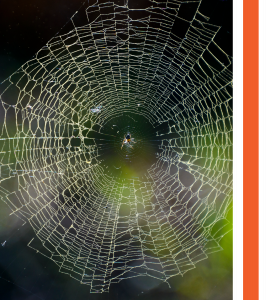 Custom glass manufacturers from Germany, Arnold Glas, have had a fantastic start in this bird-safety movement, having developed a multi-functional glass material which is energy efficient and has the added benefit of being bird-safe. Drawing inspiration from the UV reflective strands in spiderwebs, the Ornilux Bird Protection Glass was developed to help birds identify and thus avert them. Bird-safe glass, like the spiderweb, is UV coated, meaning birds can detect them as obstacles rather than mistake them for open windows to freedom due to the heightened “visual noise”.
Custom glass manufacturers from Germany, Arnold Glas, have had a fantastic start in this bird-safety movement, having developed a multi-functional glass material which is energy efficient and has the added benefit of being bird-safe. Drawing inspiration from the UV reflective strands in spiderwebs, the Ornilux Bird Protection Glass was developed to help birds identify and thus avert them. Bird-safe glass, like the spiderweb, is UV coated, meaning birds can detect them as obstacles rather than mistake them for open windows to freedom due to the heightened “visual noise”.
It should be noted that, like the termite mound, there are studies which reveal there is much we still don’t understand about the complexities of this strategy. Research conducted on wind turbines using the same strategy to avoid bird collision suggest that there is no strong evidence for UV-light reflective materials deterring our feathered friends from their fates[15].
We should also keep in mind the variables at play, such as inconsistency in UV-light presence in early mornings and gloomier days, as well as the fact that not all birds can detect UV wavelengths at all[16].
Regardless, this movement is just the beginning of biomimicry’s lesson in cohabitation. Designers are constantly seeking solutions to help protect our avian amigos; all we need is that next window of opportunity.
ORGANIC BURIALS
With all life, comes death. This is a difficult fact for us humans to process, and so we have found ways to ease our mourning and find closure with the circle of life. Throughout history and across cultures, funerary practices of all kinds have helped us find peace[17]. However, until recently there was little consideration taken into the environmental impacts of these practices.
Cemeteries serve as a place of commemoration, mourning, memories, and historical significance[18]. However, it cannot be denied that inherently, many of our systems include toxic embalming’s, emission-heavy cremations, and material-insensitive ground burials. It can also be spatially consuming, particularly with our growing population and dwindling resources.[19]
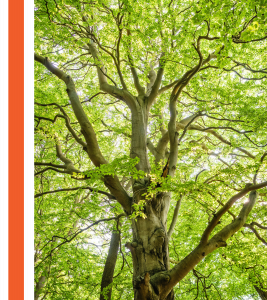 In response, the two Italian artists recognised the growing need for a sustainable alternative and began rethinking the burial culture with what’s called the Capsula Mundi project. According the team at Capsula Mundi, 4 million acres of forest are cut down each year for the construction of caskets. Additionally, cemetery lawns are both space consuming, and in need of continuous maintenance with watering and synthetic fertilization[20].
In response, the two Italian artists recognised the growing need for a sustainable alternative and began rethinking the burial culture with what’s called the Capsula Mundi project. According the team at Capsula Mundi, 4 million acres of forest are cut down each year for the construction of caskets. Additionally, cemetery lawns are both space consuming, and in need of continuous maintenance with watering and synthetic fertilization[20].
To address this, they have developed a biodegradable pod which allows for people to be planted as a tree, becoming a ‘seed’ for new life. The pods are fully biodegradable and made from ecological materials, and are egg-shaped to symbolise the regenerative cycle of life. They are also purpose designed with two organic aesthetics; sold in grey-beige, textured with sand particles for a natural surface effect, and a pearly-white with a satin finish. The pods are placed into the ground and planted beneath a tree seed, which can be planted wherever deemed appropriate. Inspired by the natural cycles of life, this project was born from the founders discovered understanding of the roles designers have in social sustainability, as well as the increasing disconnection between nature and culture.
It must be emphasised that alongside sustainability concerns, it is equally important to account for social, cultural and ethical viewpoints[21]. However, the emergence of ‘green cemeteries’ have been gaining popularity, particularly in European counties and recently North America due to its added psychological benefits[22]. With green cemeteries, the same purpose of memorialisation is served, but with the added benefit of an environmental connection which is suggested to be inherently therapeutic and healing[23].
In the ultimate act of biomimicry, they encourage us to re-embrace our natural life-cycles, rather than treating it as taboo. Rather than cut trees down and laying concrete slabs, we can imitate life’s most sustainable act of all: the creation of new life, in death.
3D PRINTING
We’ve shown you biomimicry applied to industrial products and other design applications; now in a shocking twist, we now present holistic biomimicry manifested in manufacturing, proving that sustainability doesn’t begin with the product, but with the process. This fact is materialised in the more recently popularised practice known as 3D Printing.
Nature is the master of creation. Using a ‘bottom-up’ strategy, it fabricated unique, adaptive features in a survival-mode roll of the dice. One molecule at a time, material and lifeforms are constructed in a chaotic game of molecular lego, leading to the genesis of all things such as wood, coal, silk and pearls[24]. It has also used this system to generate a range of unique material features such as adhesives, hydrophobic surfaces, thermal signals, and chemical resistive properties[25].
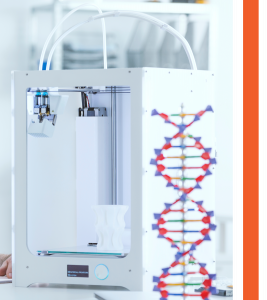 This self-assembly process is spontaneous, yet effective, using the bare minimum material needed and thus generating little to no waste. It also outlines key aspects of biomimietic structures, such as local sourcing (aka natural ingredients) and reverse logistics (aka biodegradability)[26]. Thus, Planet Earth has earned its universal reputation as the #1 organic and sustainable form of additive manufacturing.
This self-assembly process is spontaneous, yet effective, using the bare minimum material needed and thus generating little to no waste. It also outlines key aspects of biomimietic structures, such as local sourcing (aka natural ingredients) and reverse logistics (aka biodegradability)[26]. Thus, Planet Earth has earned its universal reputation as the #1 organic and sustainable form of additive manufacturing.
This fundemntal, biological observation has facilitated the discovery of technological solutions for human problems, as we have taken note of the foundational principle of bottom-up manufacturing when developing our own creations[27]. 3D Printing follows the same “bottom-up” principles, but does it by design (well, a calculated human design). By replicating this system, we have established a nature-inspired manufacturing process which is less wasteful, energy efficient, and less resource-intensive[28].
3D Printing also is not exclusive to polymers, all thanks to the efforts of those who are turning to nature for inspiration, both for renewable resources and for biofriendly processes[29].and can print in anything from metal, clay, sand, and recently even chitosan, a raw biological material found in crabs and insect shells. [30]
In Massachusetts, USA, scientist Neri Oxman from MIT Media Lab has created an entire field called material ecology. She was able to 3D Print with the material Chitosan, made from raw biological ingredient found in crab and insect shells[31].
That being said, even polymers have the potential to go green, seen in Havard’s Don Ingber’s success in creation an insect-inspired plastic with aluminium strength, which he has called “shrilk” [32]. One day, we could be sourcing our 3-D printer polymers from CO2 (as plants do), or waste carbohydrates (as animals do)[33]; ultimately, 3D Printing allows us on envision new possibilities for holistic biomimicry which we haven’t seen before.
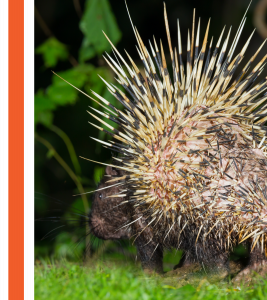 By imitating nature, we’re also inevitably thanking it, by reducing the pressure.
By imitating nature, we’re also inevitably thanking it, by reducing the pressure.
Finally, 3D printing has also provided the flexibility and strength which allows for designers to achieve geometrically complex structures which is required when replicated natural and organic design features. Here in Australia, researrchers investigated the notorious porcupine quill, with properties allowing it to withstand shockingly high compression loads, for engineering applications; they were able to replicate the naturally inspired structure using a form of 3D printing[34].
We see another example in the UK at the University of Bristol, where researchers have created a 3D Printed robot insired by the auatic water boatman beetle, which self-propels across the surface of lakes and consumes the floating microbs. Not only does this device help maintain the ecological health of the pools, but it self-charges on the microbes it consumes; the potential for both environmental monitoring and water clean-up systems is monumental[35].
“There are literally as many ideas as there are organisms.” – Janine Benyus
Many state that evolution is not a system of perfection; it works on the basis of “just good enough”, using the minimal energy required to find a solution which achieves survival, before ceasing any further development. It could be argued that it’s the role of humans to take the basic principles, and become masters of optimized design.
This being said, nature is still millions of years ahead of us in terms of sustainable, synergetic design. We have yet to fully actualize and optimize our inherit co-dependency on our environment, a feat which nature has seemed to achieve effortlessly.
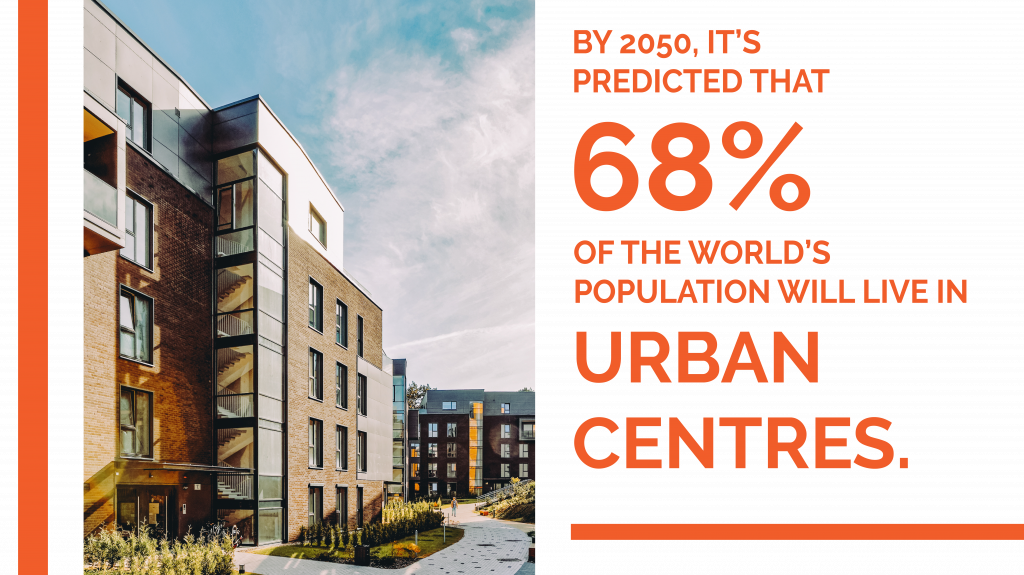
We are an increasingly evolving and heavily consuming species, a fact which is only amplified by the rise of urbanisation and industrialisation. Paired with the rapid rise and spread of the human population, the need for social and ecological systems to co-evolve and thrive has never been more crucial[36].
The aim for designers, manufacturers, and all relevant stakeholders to ensure that, lie the projects and products discussed in this series, our future projects make a lasting effort to accommodate for a complete symbiosis with local ecosystems. It’s up to us to fuel a reconnection for consumerists with organic, sustainable systems, and resolve our globally strained relationship with the natural world. This is the essence of sustainability, and holistic biomimicry.
After all, what better way to repair things with nature, than by listening to what it has to say?
REFERENCES
[1] AlGeddawy, T. N., & ElMaraghy, H. A. (2009, March 31). Symbiotic Design of Products and Manufacturing Systems Using Biological Analysis. Dspace.lib.cranfield.ac.uk; Cranfield University Press. http://hdl.handle.net/1826/3663
[2] Blanco, E., Pedersen Zari, M., Raskin, K., & Clergeau, P. (2021). Urban Ecosystem-Level Biomimicry and Regenerative Design: Linking Ecosystem Functioning and Urban Built Environments. Sustainability, 13(1), 404. https://doi.org/10.3390/su13010404
[3] French, J. R. J., & Ahmed, B. M. (2011). Biomimicry of Termite Social Cohesion and Design to Inspire and Create Sustainable Systems. On Biomimetics. https://doi.org/10.5772/19350
[4] Wahl, D. C. (2006). Bionics vs. biomimicry: from control of nature to sustainable participation in nature. Design and Nature III: Comparing Design in Nature with Science and Engineering. https://doi.org/10.2495/dn060281
[5] McBride, B. B., Brewer, C. A., Berkowitz, A. R., & Borrie, W. T. (2013). Environmental literacy, ecological literacy, ecoliteracy: What do we mean and how did we get here? Ecosphere, 4(5), art67. https://doi.org/10.1890/es13-00075.1
[6] French, J. R. J., & Ahmed, B. M. (2011). Biomimicry of Termite Social Cohesion and Design to Inspire and Create Sustainable Systems. On Biomimetics. https://doi.org/10.5772/19350
[7] French, J. R. J., & Ahmed, B. M. (2011). Biomimicry of Termite Social Cohesion and Design to Inspire and Create Sustainable Systems. On Biomimetics. https://doi.org/10.5772/19350
[8] Judith Korb, Karl Eduard Linsenmair, Ventilation of termite mounds: new results require a new model, Behavioral Ecology, Volume 11, Issue 5, September 2000, Pages 486–494, https://doi.org/10.1093/beheco/11.5.486
[9] Turner, Scott. (2008). Beyond biomimicry: What termites can tell us about realizing the living building. Proceedings of 1st International Conference on Industrialized, Intelligent Construction.
[10] Turner, Scott. (2008). Beyond biomimicry: What termites can tell us about realizing the living building. Proceedings of 1st International Conference on Industrialized, Intelligent Construction.
[11] Sarkar, R., & Bhadra, A. (2022). How do animals navigate the urban jungle? A review of cognition in urban-adapted animals. Current Opinion in Behavioral Sciences, 46, 101177. https://doi.org/10.1016/j.cobeha.2022.101177
[12] Lee, H. S. (2013). Study on Design Considerations to Prevent Bird Collisions with Glass. Journal of the Korean Institute of Rural Architecture, 15(1), 13-20.
[13] Sheppard, C. D. (2019). Evaluating the relative effectiveness of patterns on glass as deterrents of bird collisions with glass. Global Ecology and Conservation, 20, e00795. https://doi.org/10.1016/j.gecco.2019.e00795
[14] Craig, C. L., & Bernard, G. D. (1990). Insect Attraction to Ultraviolet-Reflecting Spider Webs and Web Decorations. Ecology, 71(2), 616–623. https://doi.org/10.2307/1940315
[15] YOUNG, D. P., JR., W. P. ERICKSON, M. D. STRICKLAND, R. E. GOOD, AND K. J. SERNKA. 2003. Comparison of avian responses to UV-light-refl ective paint on wind turbines. Subcontract Report July 1999–2000. National Renewable Energy Laboratory. Golden, CO.
[16] Sheppard, C. D. (2019). Evaluating the relative effectiveness of patterns on glass as deterrents of bird collisions with glass. Global Ecology and Conservation, 20, e00795. https://doi.org/10.1016/j.gecco.2019.e00795
[17] Allam, Z. (2020). Urban and Graveyard Sprawl: The Unsustainability of Death. In: Theology and Urban Sustainability. SpringerBriefs in Geography. Springer, Cham. https://doi.org/10.1007/978-3-030-29673-5_3
[18] Hodych, A. M. (2005). Disturbing ground: a socio-environmental model for the green cemetery in Manitoba (Master’s thesis).
[19] Slominski, E. M. (2020). The Life and Death of Funeral Practices: Persistence and change in the death system and the rise of eco-funerals in the United States. Www.duo.uio.no. http://urn.nb.no/URN:NBN:no-82364
[20] Capsula Mundi – The biodegradable urn to become a tree after the dead. (2019). Capsula Mundi. https://www.capsulamundi.it/en/
[21] Keijzer, E. The environmental impact of activities after life: life cycle assessment of funerals. Int J Life Cycle Assess 22, 715–730 (2017). https://doi.org/10.1007/s11367-016-1183-9
[22] Hodych, A. M. (2005). Disturbing ground: a socio-environmental model for the green cemetery in Manitoba (Master’s thesis).
[23] Hodych, A. M. (2005). Disturbing ground: a socio-environmental model for the green cemetery in Manitoba (Master’s thesis).
[24] Zhang, S. (2003). Building from the bottom up. Materials Today, 6(5), 20–27. https://doi.org/10.1016/s1369-7021(03)00530-3
[25] Schroeder, T. B. H., Houghtaling, J., Wilts, B. D., & Mayer, M. (2018). It’s Not a Bug, It’s a Feature: Functional Materials in Insects. Advanced Materials, 30(19), 1705322. https://doi.org/10.1002/adma.201705322
[26] Avsec, M. (2016). Biomimicry and 3d printing. In Third Annual Benesch 3D printing conference spotlights biomimicry, startups, and legal issues in additive manufacturing.
[27] Huie, J. C. (2003). Guided molecular self-assembly: a review of recent efforts. Smart Materials and Structures, 12(2), 264–271. https://doi.org/10.1088/0964-1726/12/2/315
[28] Filippone, A. (n.d.). Performative Biomimicry Discovering new design approaches for desert environments. Retrieved November 22, 2022, from https://www.ltu.edu/uploads/media/arch-design/MARCH_Thesis/2022/Pdfs/Filippone_Report.pdf
[29] Avsec, M. (2016). Biomimicry and 3d printing. In Third Annual Benesch 3D printing conference spotlights biomimicry, startups, and legal issues in additive manufacturing.
[30] Filippone, A. (n.d.). Performative Biomimicry Discovering new design approaches for desert environments. Retrieved November 22, 2022, from https://www.ltu.edu/uploads/media/arch-design/MARCH_Thesis/2022/Pdfs/Filippone_Report.pdf
[31] Tee, Y. L., Maconachie, T., Pille, P., Leary, M., Do, T., & Tran, P. (2021). From nature to additive manufacturing: Biomimicry of porcupine quill. Materials & Design, 210, 110041. https://doi.org/10.1016/j.matdes.2021.110041
[32] Fernandez, J. G., & Ingber, D. E. (2011). Unexpected Strength and Toughness in Chitosan-Fibroin Laminates Inspired by Insect Cuticle. Advanced Materials, 24(4), 480–484. https://doi.org/10.1002/adma.201104051
[33] Avsec, M. (2016). Biomimicry and 3d printing. In Third Annual Benesch 3D printing conference spotlights biomimicry, startups, and legal issues in additive manufacturing.
[34] Tee, Y. L., Maconachie, T., Pille, P., Leary, M., Do, T., & Tran, P. (2021). From nature to additive manufacturing: Biomimicry of porcupine quill. Materials & Design, 210, 110041. https://doi.org/10.1016/j.matdes.2021.110041
[35] Bio-inspired 3D printed Row-Bot cleans water surface as it “eats” water bacteria. (n.d.). 3ders.org. Retrieved November 29, 2022, from https://www.3ders.org/articles/20151117-bio-inspired-3d-printed-row-bot-cleans-water-surface-as-it-eats-water-bacteria.html
[36] Blanco, E., Pedersen Zari, M., Raskin, K., & Clergeau, P. (2021). Urban Ecosystem-Level Biomimicry and Regenerative Design: Linking Ecosystem Functioning and Urban Built Environments. Sustainability, 13(1), 404. https://doi.org/10.3390/su13010404

